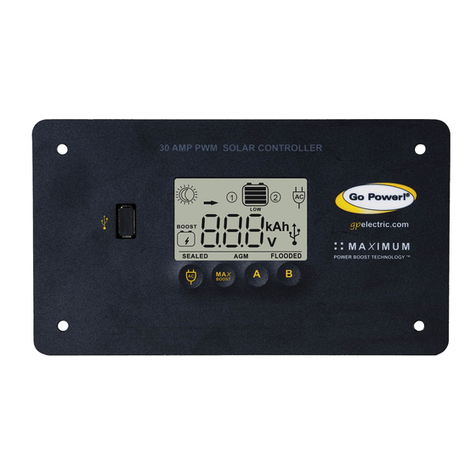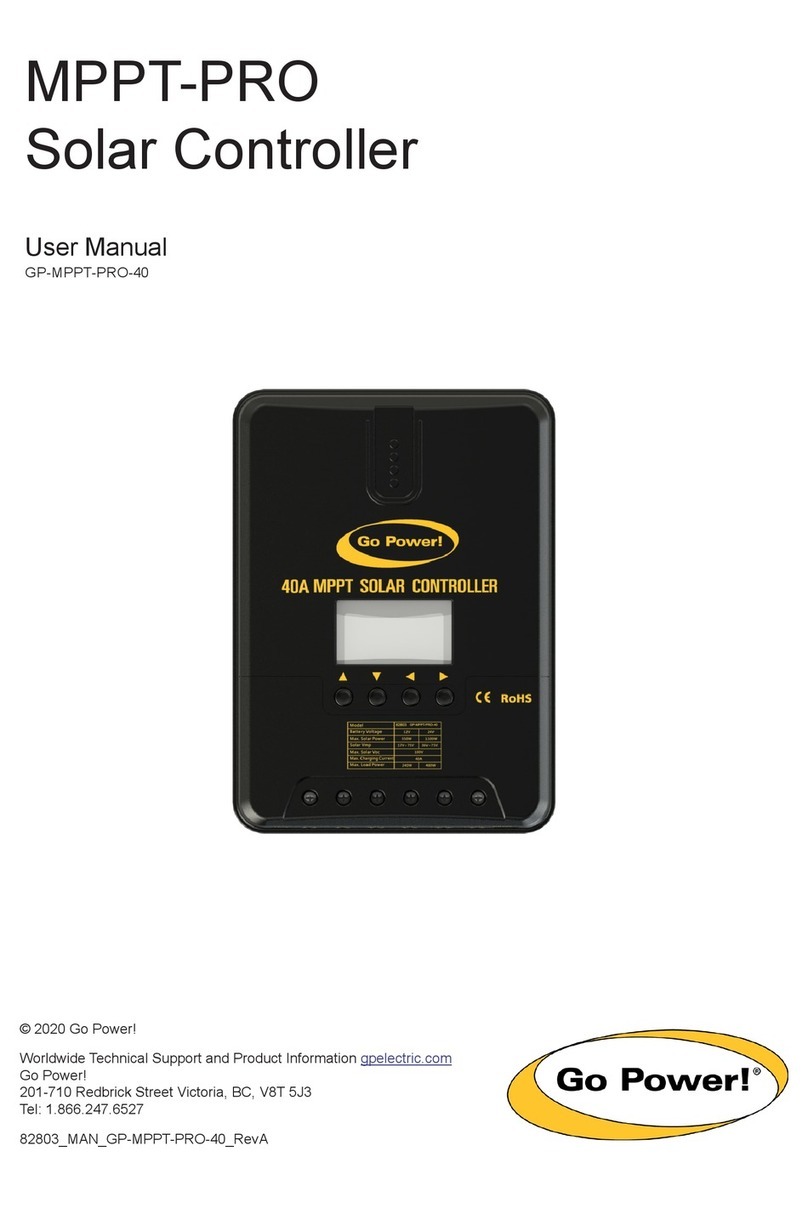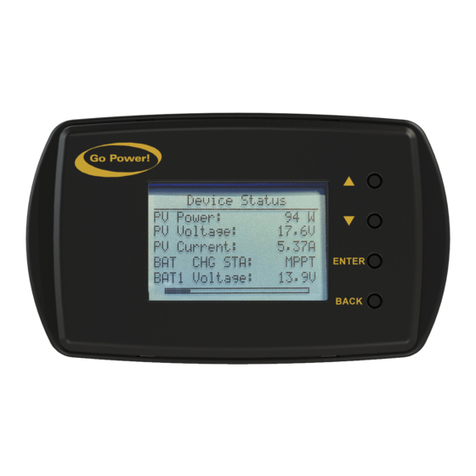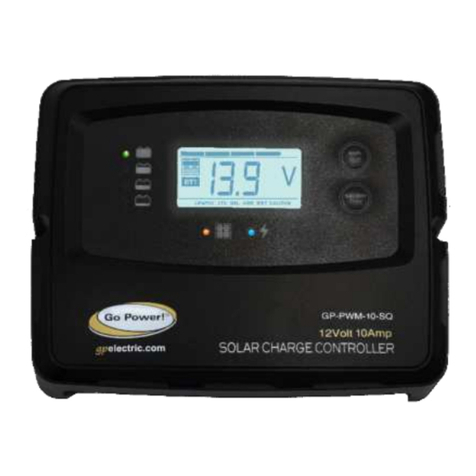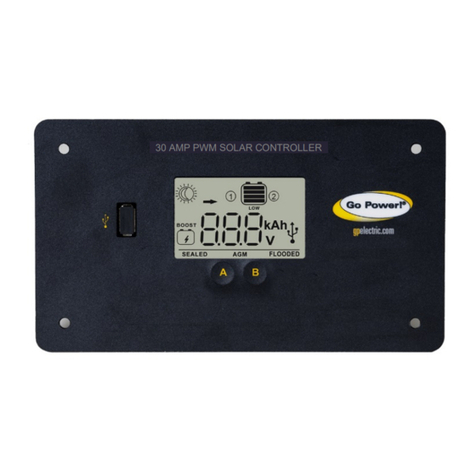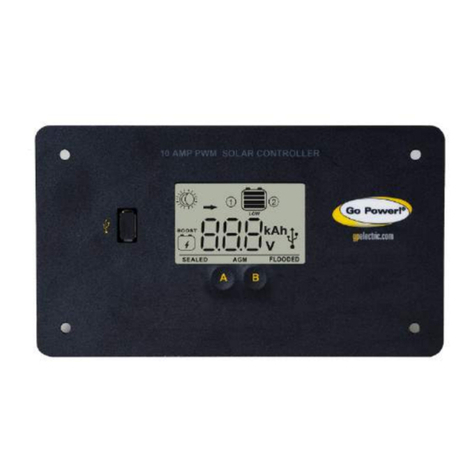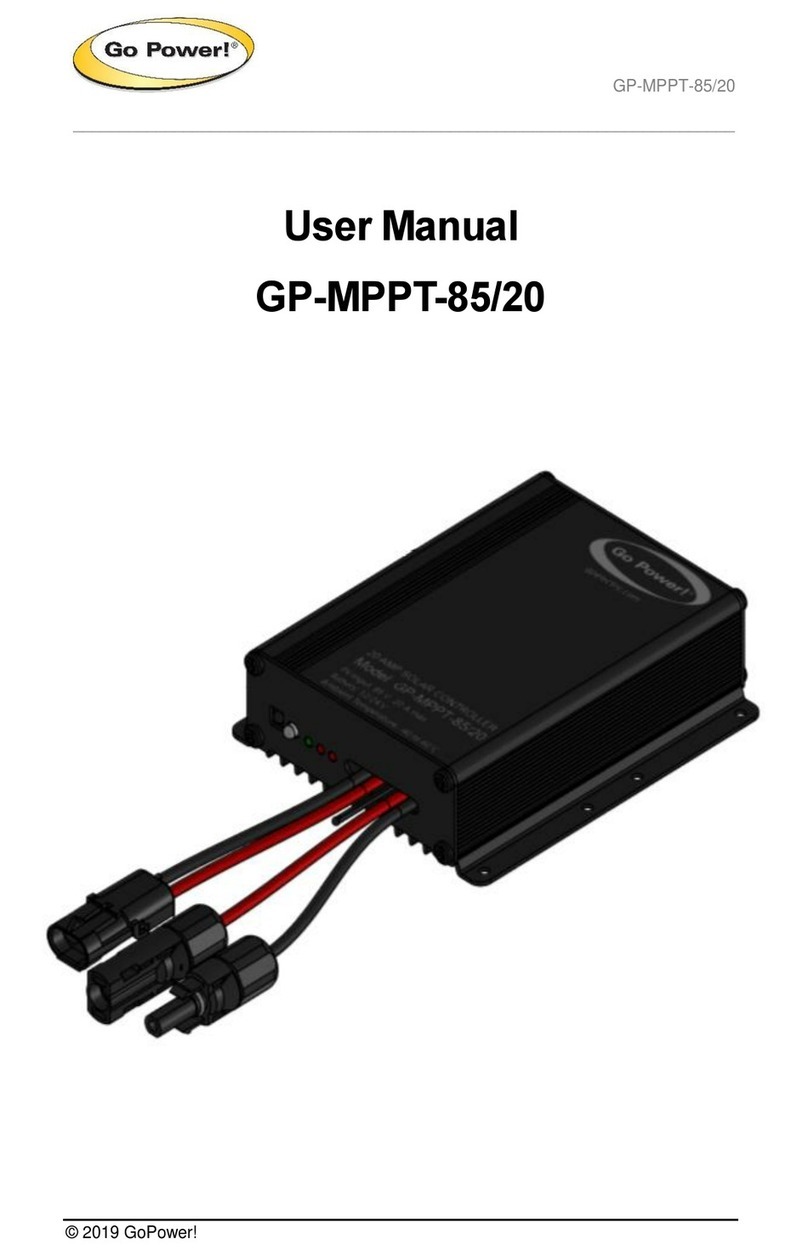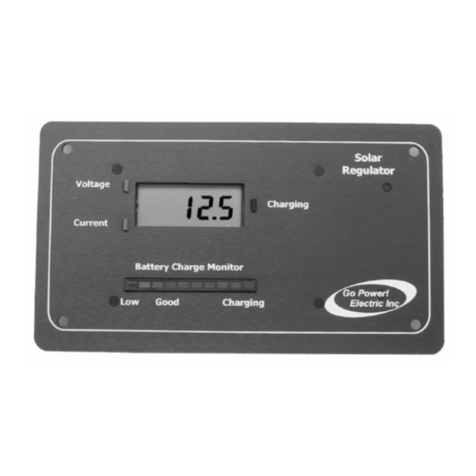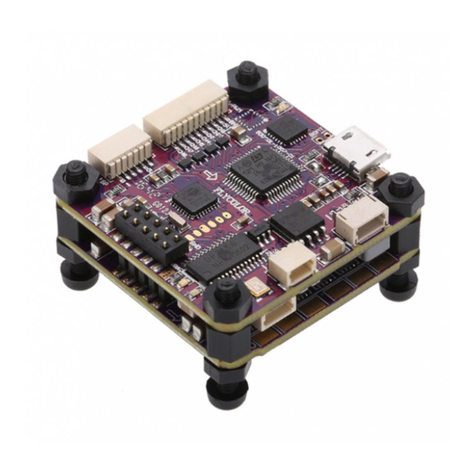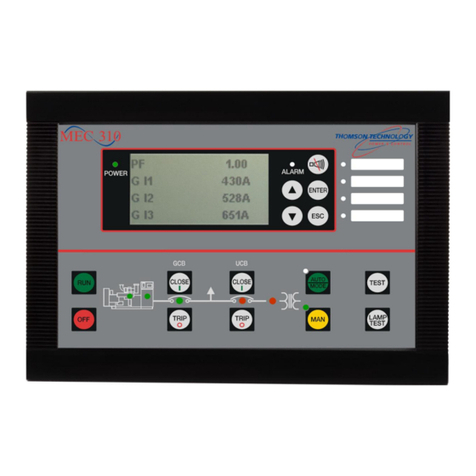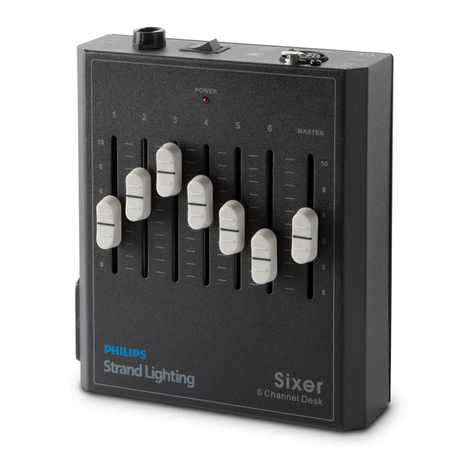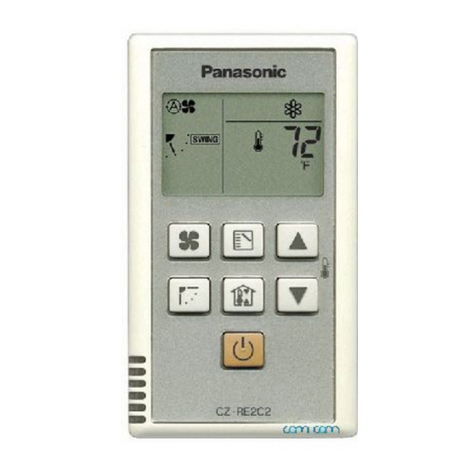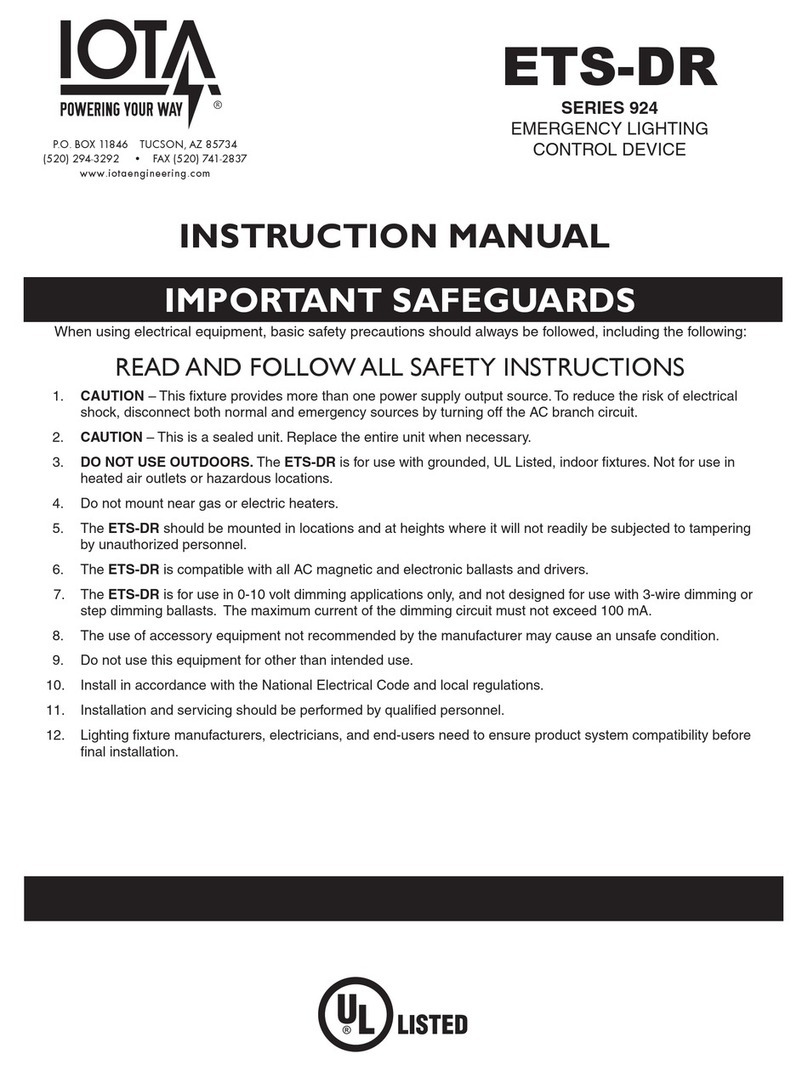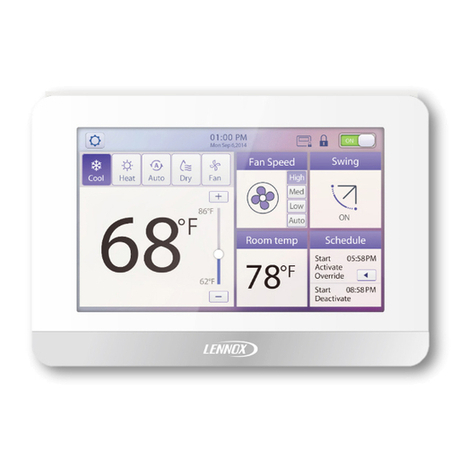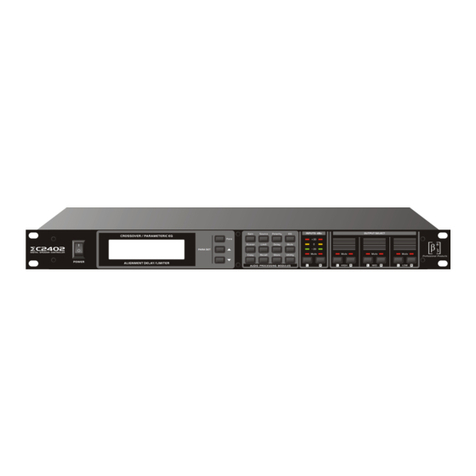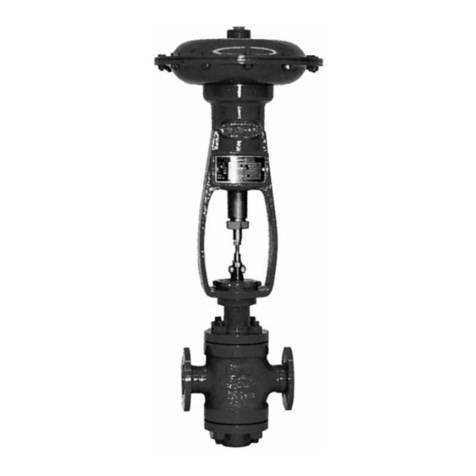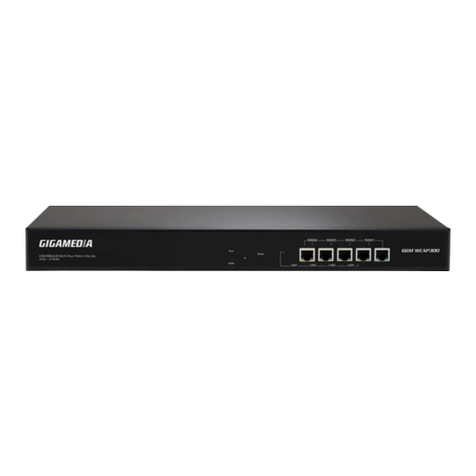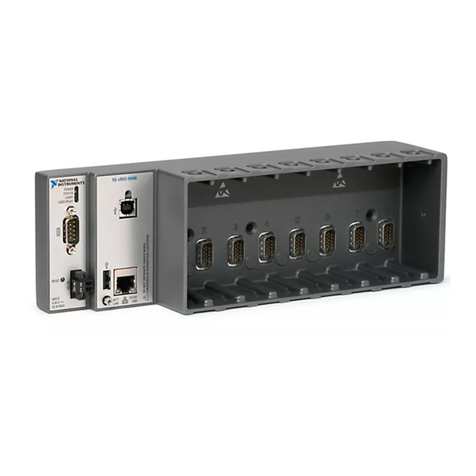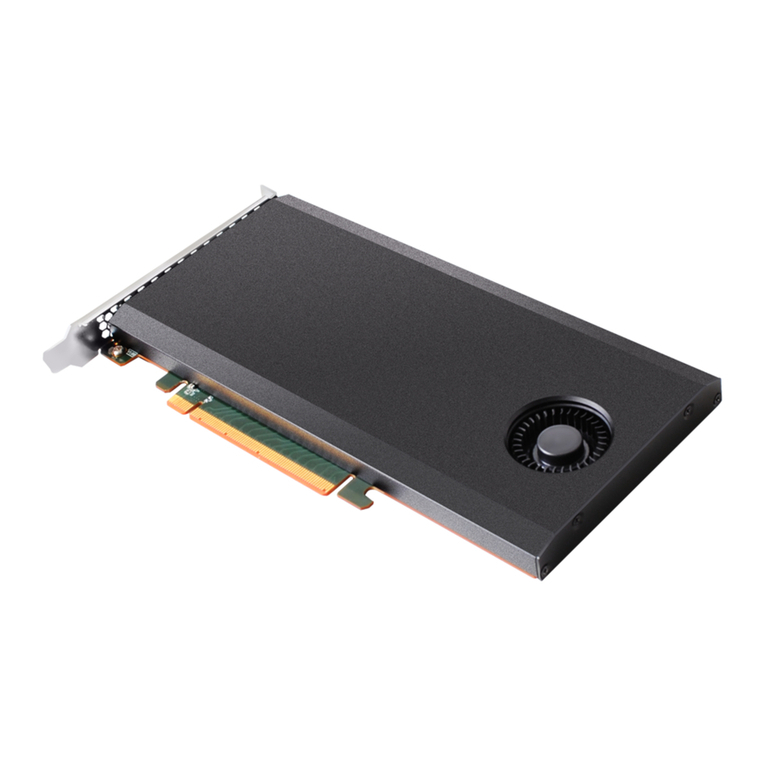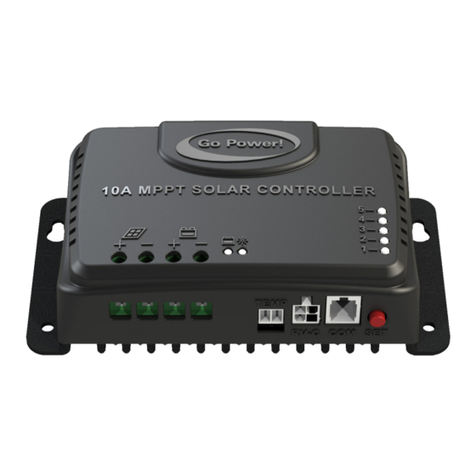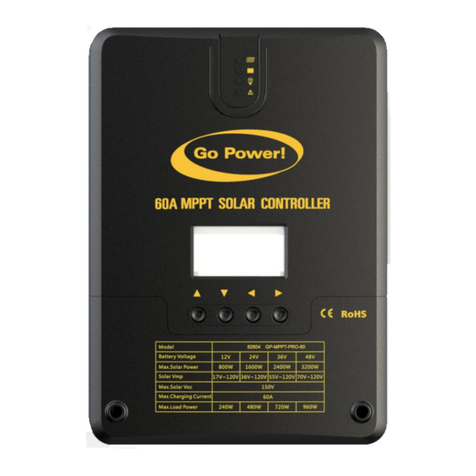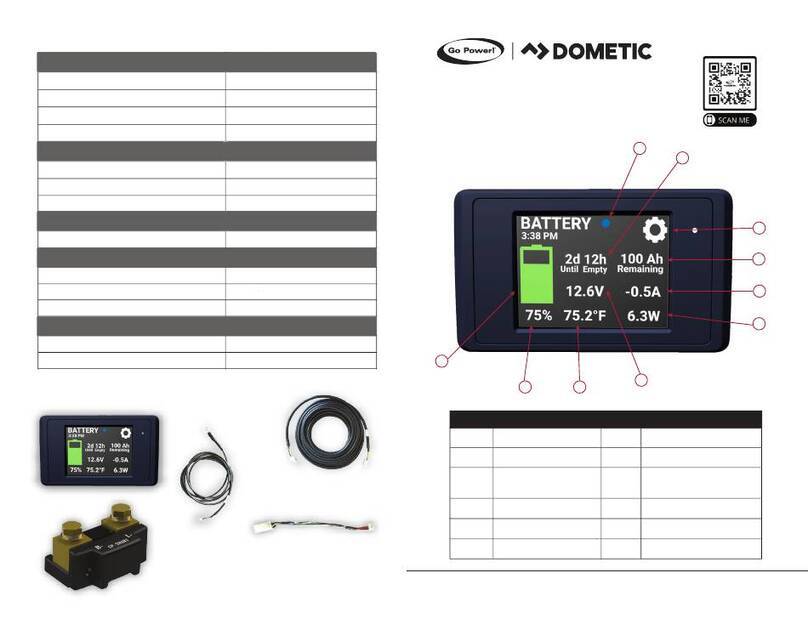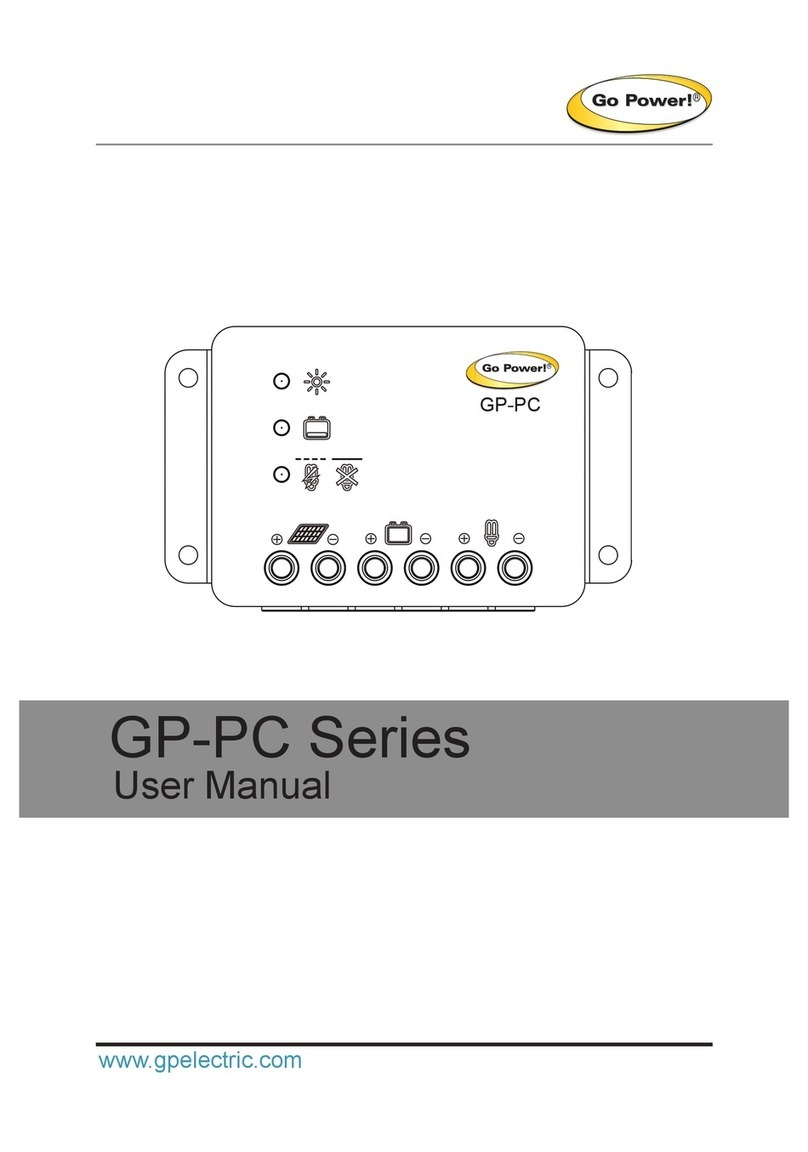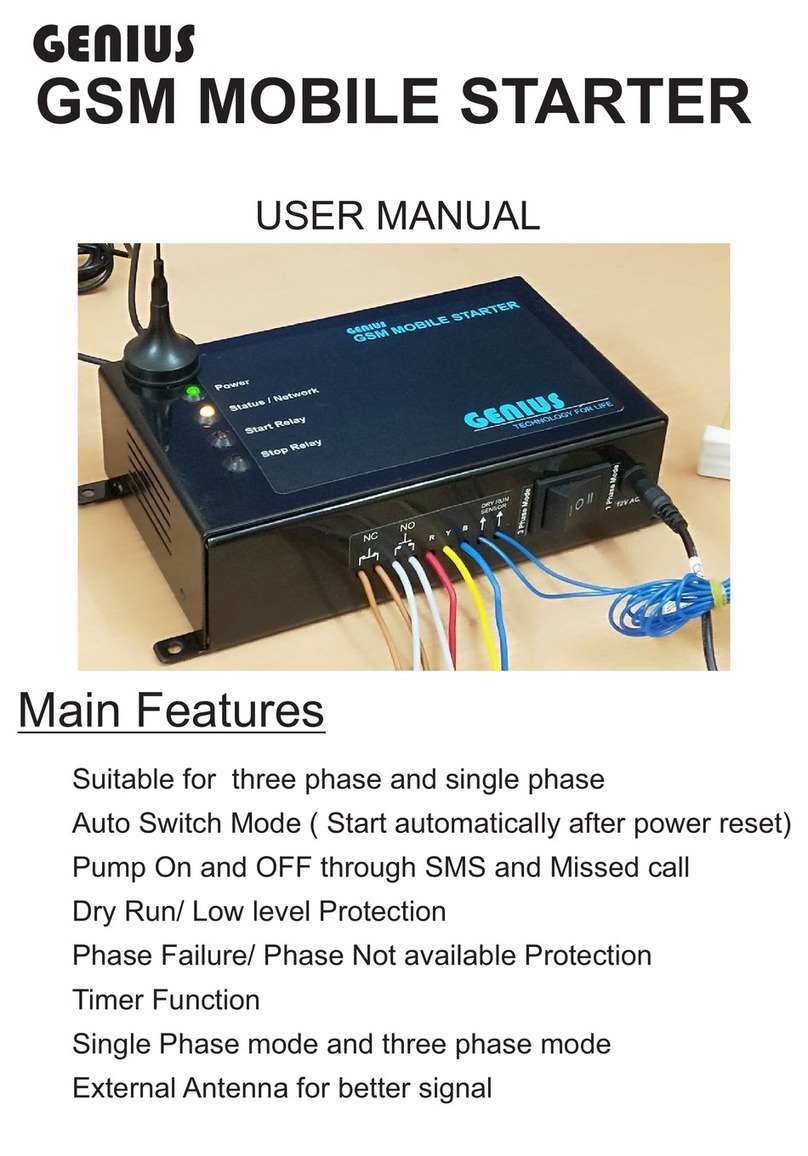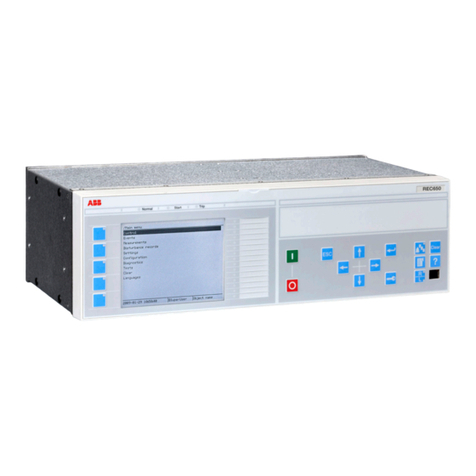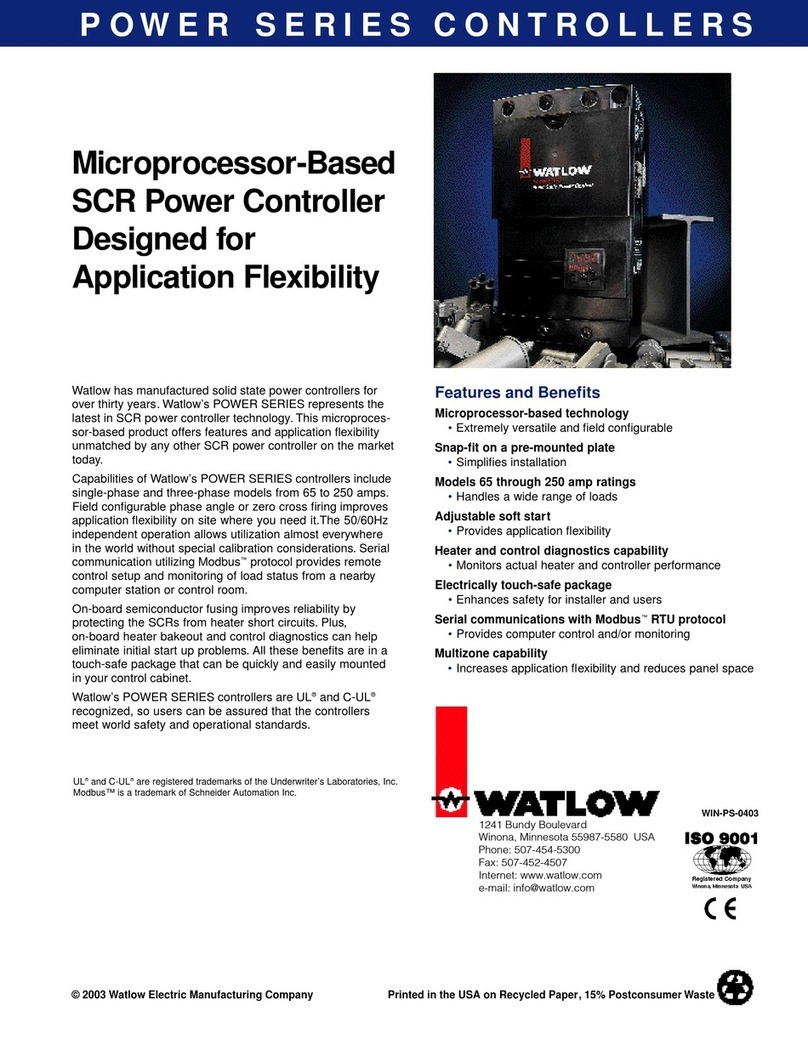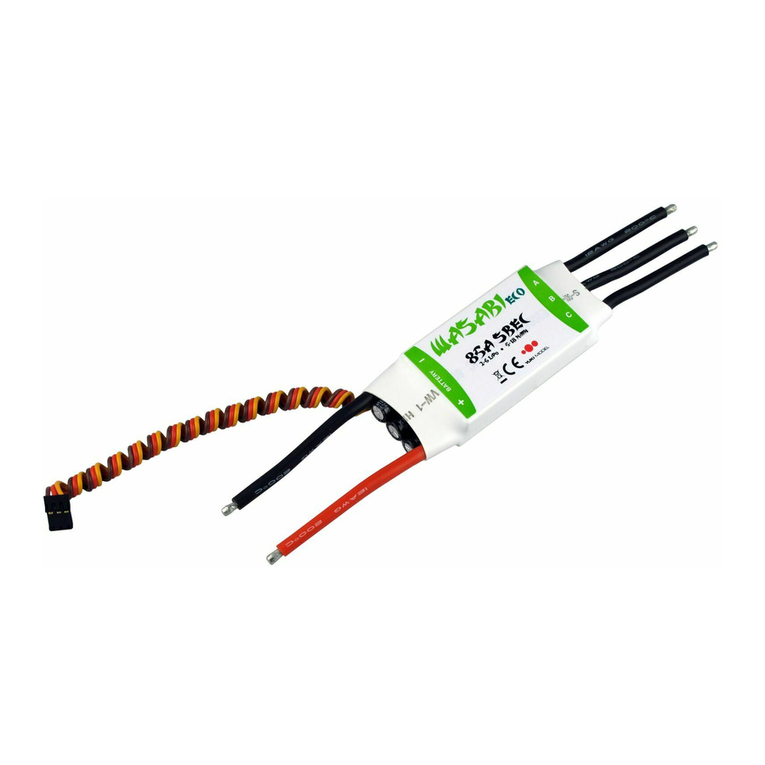Solar Controller
GP-PWM-30
______________________________________________________________________
20
© 2012 Carmanah Technologies Corporation
September 2012
10.0 Glossary
Ampere: A unit of electrical current. Designates the number of electrons flowing per
second through a conductive material.
Array: One or more photovoltaic (PV) modules electrically connected to produce a single
electrical output.
Battery: Two or more electrochemical cells connected to provide energy storage.
May be used to designate one cell. PV system batteries may be “sealed” or “wet acid”.
Charge Controller: The PV system component that controls the battery’s state of charge.
It may also provide other system control functions. Also referred to as a controller.
Charge Rate: The current applied to a battery to restore its energy capacity. The battery
manufacturer will usually have a recommended charge rate for their product. The rate is
typically 10 –20 percent of the amp hour capacity at the 20-hour rate.
Current: DC or Direct Current is the type of electron flow provided by a battery or solar
cell, which flows in one direction. The unit for current is ampere or amp for short and
designated by the letter A.
Deep Cycle Battery: Batteries that are designed to discharge as much as 80% of their
capacity as opposed to engine-starting or “shallow cycle” batteries which are designed for
heavy cranking but will not stand up to repeated deep discharges.
Equalization: The process that equalizes the specific gravity of all the cells in a battery by
means of a controlled overcharge that breaks down sulfation on the battery plates. Most
inverter/chargers and some charge controllers are equipped with this feature.
Maximum Power: Also referred to as peak power. The point of a solar array, panel or
module output where the product of “Imp” and “Vmp” (“Pmax”, measured in watts) is
maximized. The points used to calculate Pmax are Imp (current @ max power) and Vmp
(voltage @ max power).
Solar Module: A number of solar cells electrically connected, and protected from the
environment usually by an aluminum frame covered with a pane of glass. A module is self-
contained and not sub dividable, therefore providing a single electrical output.
Open-Circuit Voltage (Voc): Refers to a photovoltaic device’s voltage potential when it is
disconnected from the rest of the PV system.
Parallel Connection: Electrical connection where the positive terminals of a number of
devices are connected together, as are their negative terminals. The output voltage is
usually limited to the device with the lowest voltage, and the total current is the sum of the
current of all the devices.
Photovoltaic (PV): Capable of producing a voltage when exposed to radiant energy,
especially light.
Sealed Batteries: Electrolyte will not spill out and gassing is kept to a minimum. A sealed
battery is maintenance free and may be installed in several orientations. GEL and AGM are
two common types of sealed batteries.




















